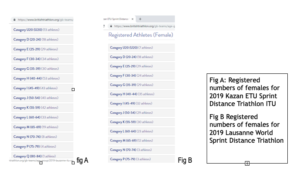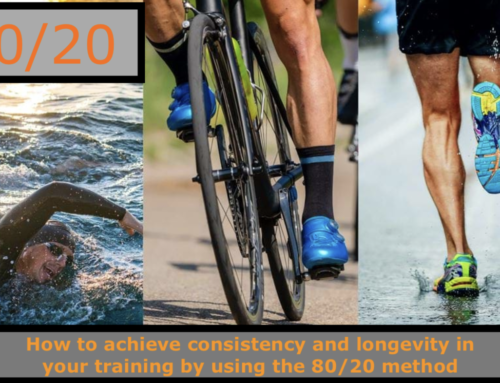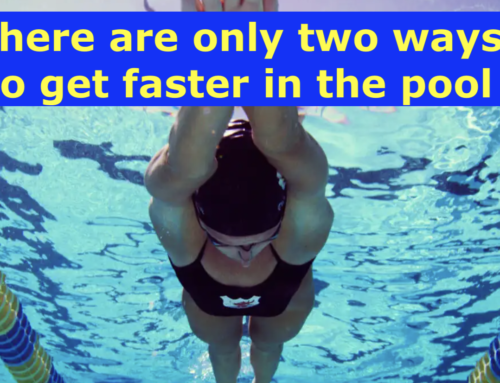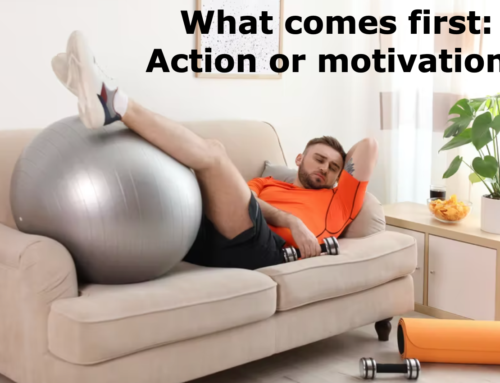Firstly, after my initial embarrassment of getting my first blog out there and ‘outing’ myself in the bargain, I’m actually relieved to have brought this tricky subject back into the spotlight. I say back because I’ve been invited to join the GB Menopausal Triathlete discussion group on Facebook set up way back to provide a platform for members who like me, just want a sounding board for the symptoms experienced by the Peri-Menopause and share ideas/ solutions to managing them in light of being the best Triathlete they can be.
I also believe this was mentioned as a kind of ‘door handle moment’ at the recent ‘Training Peaks’ conference last month brought to my attention by Jon Cowell GBR Age group Team manager) and Simon Ward
The Menopause in the UK is also now finally getting some media attention. Tonight (Monday 26.11.18) the BBC1 will air ‘The Truth about the Menopause’ after celebrities such as Mariella Frostrup, Andrea McLean (‘Confessions of a Menopausal Woman: Everything You Want to Know But are Too Afraid to Ask’) and Meg Matthews (MegsMenopause) have brought this subject into the spotlight via their research and media campaigns. All women recognise that the subject is off limits, ‘taboo’ and probably still will be for a long time unless we change our attitudes.
I was disappointed that only three volunteers from my Triathlon club wanted to share their stories and experiences despite there being at least fifteen others in the AG 40+. I had no responses from my cycling community, and only a dozen from the GRB forum and I think I have a good idea why.
Mariella Frostrup puts this down to ‘Image’ She believes ‘the menopause has a serious problem in that there may be little to generate excitement about the end of fertility’. Mariella spent eight weeks touring the UK speaking to menopause specialists and sufferers to explore all the myths and taboos while looking at the various treatments available. Even then, she said ‘It took a woman — Charlotte Moore, the BBC’s Director of Content — to produce the programme, and she had to cut a decisive swathe through many levels of male concerns about losing viewers’ to get it made’.
Interestingly Simon Ward (5x times coach of the year BTF) raised this point with me when agreeing to support my blog he said he would ‘gauge the response and if there was enough interest, he would consider a podcast’ but in all fairness did not think this would generate much attention and so far, he’s right! It is the discomfort and embarrassment of the menopause that I believe is preventing knowledge and keeping everyone ‘shamed in silence’ and the result is that we are not moving forward and there’s little advice out there especially for training and racing as a Triathlete.
The Menopause is perceived as ‘a shutting down. A menopausal woman is a pointless specimen of humankind. And lots of women walk into it with eyes wide shut’ (M. Frostrup Daily Mail p52-53 Sunday 25.11.18).
As a Peri-menopausal Triathlete, I feel that I am definitely training blind. It is my understanding that coaches of Triathletes going through this stage need a different approach to their training. A fellow Triathlete advised me to read Roar, (Stacy Sims) This book is essentially a guide to understanding how to match training cycles and fuelling to the physiology of a female. Sims is an exercise physiologist and nutrition scientist who was also a competitive athlete completing multiple Ironman races before officially retiring in October 2011. One of the most interesting themes of ROAR is how she divides training cycles into high and low hormone phases and suggests females tailor their training to work with, instead of against, their body, according to these phases.
‘Training cycles for women should be divided into high and low hormone phases. Sims describes “low hormone phase’ as ‘the time during and immediately after your period’ where she believes our physiology is ‘most like that of a man’ and suggests that ‘racing with your period is actually a good thing’ using Paula Radcliffe’s record breaking marathon run in Chicago as an example. But, during the ‘high hormone phases —a few days before your period, Sims states that ‘things like building muscle, recovery and staying hydrated become much more difficult’. Ironically we are ‘most like a man when it comes to exercise, fuelling and thermoregulation during your period and the follicular phase and that it’s harder to hit high intensities and recover from hard exercise during the high-hormone phase.’
To clarify and support this idea, I found a super article on Training peaks by Nicole Odell
‘Assuming a typical 28 day cycle, we break the cycle into two 14-day phases, the follicular phase (day 1-14) and the luteal phase (day 15-28). Day 1 of the cycle is when menstrual bleeding starts. There are two main hormones involved, oestrogen and progesterone. At about day 5 or 6, oestrogen (produced in the ovaries) rises slightly. Around day 12 there is a surge in oestrogen coupled with a luteinizing hormone (LH) surge, which causes ovulation. Oestrogen levels decrease somewhat after this but will soon rise again.
Upon ovulation, progesterone levels increase to prepare the lining of the uterus for egg implantation. This is the luteal phase and the high hormone phase. The highest hormone levels of both oestrogen and progesterone occur about 5 days before the period. This is often the time on the cycle where women may experience premenstrual symptoms. If there is no egg implanted, progesterone levels fall and we shed the lining and are back to day 1.
What this means for training and racing in terms of energy:
When oestrogen levels are high, women tend to conserve glycogen stores and utilize more fat as fuel. For longer endurance events (ultramarathons as an example) this could potentially be beneficial. But this glycogen sparing mode might make it more challenging to reach higher intensities. Supplemental carbohydrates are important in this phase. In other words, if you are in a high hormone phase, you might find you need to take in a few extra carbohydrates to get a similar higher intensity performance as you would without supplemental carbohydrates in a low hormone phase, assuming all other conditions are equal. On race day, this is important.
Progesterone promotes protein catabolism, and Stacy Sims, Research Scientist and founder of OSMO Nutrition, suggests ingesting BCAAs pre-exercise during the mid-luteal/high hormone phase. Protein ingestion is also important for female athletes in regards to recovery. The recovery window is a lot tighter for women, as we return to basal metabolic rates within a few hours. For harder efforts or training of long duration, that 30-60 minute window to consume post-workout protein and carbohydrate is a lot more critical for women.
In a nut shell this is my take away:
|
Follicular phase |
Luteal Phase |
||||
|
Menstruation day 1 2,3,4,5, increase in Oestrogen Good time to race and train like a man: Paula Radcliffe sets new marathon record! Personally, I never raced or trained well during days 1-3, felt bloated uncomfortable and experienced abdominal pain
|
6,7,8,910,11 |
12 Ovulation 13,14, |
15,16,17,18, 19,20,21,22,24 |
Days 24,25,26,27,28, |
|
|
Increase in Oestrogen Good time to train like a man! I agree always felt good probably over did it during these phases too!
|
Progesterone on the increase – this breaks down Proteins so pay attention to your proteins and eat them up.Training shouldn’t really suffer. |
Watch out ‘PMT is out and about. This is the highest phormone phase. Your body starts to conserving energy so switches to using fat for fuel instead of glycogen. No wonder you hit the wall on your Supra threshold/ V02 max sets- Body finds it hard to reach high intensities without easy to reach glycogen – Note also that Blood plasma volumes are low and core body temperature is elevated. All affecting hydration and energy production. and to top it all off, progesterone affects your sleep! I have been known to bailed out of a few intervals during this phase and cried my eyes out thereafter! it’s just the hormones! |
|||
|
Still a good time to train although you may experience some cramping known as: mittelschmerz this has occasionally brought me to my knees during some training sessions! |
|||||
And did you know about the ‘Effects of Oral Contraceptives?’
Oral contraceptives increase hormone levels significantly, and you can consider yourself always in a high hormone phase. Even during the placebo week, natural oestrogen surges up to concentrations to mimic the natural luteal phase!
(Source: The Female Athlete: Understanding Your Cycle and Performance MAY 29, 2014 BY NICOLE ODELL https://www.trainingpeaks.com/blog/understanding-your-cycle-and-performance/ 26.11.18)
I’m keen to know whether there are coaches or triathletes who recognise and plan their training around this knowledge? If so, it would be great to have an example provided for a female Triathlete 40+ over a 12-week training block. Even better, has any one got an example of a training plan for a Peri -Menopausal Triathlete who doesn’t know when her next high or low hormone phase is? How does that work when our hormones are running awry and menstrual cycles are hit and miss?
I regularly use the free on-line training plans provided by Triathlon 220 (http://www.220triathlon.com/training/training-plans/) and I’m sure if you’re new to triathlon you would find these beneficial. However, it would be even better if there were some plans designed specifically for women that highlighted such matters?
Currently I’m planning my training month by month, using the model suggested by J. Friel. I am splitting my training year into phases (p100). Then I will proceed by splitting each block on a cycle of 3 weeks progressive build + 1 recovery week (He does suggest 2 weeks then recover for people over 50!). I seldom had a recovery week previously, clearly this must change this year and perhaps I will reap the benefits? I plan to estimate when I should have a period and make notes on what is happening to my body. Having recently had the coil removed, I have not had a period as yet (7 weeks since) and I’m definitely suffering with sleep deprivation due to hot flushes at night and during the day (which I believe has resulted in a significant bout of flu). I am also going to include specific strength work this year as suggested by Stacy Sims therefore, one or two of my regular swim, bike or run sessions will have to go, to factor in my time available to train. I must admit, I am very anxious about cutting these sessions in terms of the impact they may have on my fitness and weight and I”m wondering if other triathletes do this or, whether they squeeze it in to an already jam-packed week? Given that I can currently commit a maximum of 10 hours to my Sprint Triathlon Training so far, a 10 hour week looks something like this for me:
|
Tr. Hrs |
Monday |
Tuesday |
Wednesday |
Thursday |
Friday |
Saturday |
Sunday |
|
10 |
Run 30 Circuits 45 Swim 30 |
Bike 1 hr Run off 20 |
weights 30 Swim 1hr |
REST
|
Bike 1hr weights 30 min Swim 30min |
Run 1 (house work chores!!)
|
Bike 1.30 Swim 1hr |
Intensity varies depending on training phase and so will the hours. This ratio will also be adapted if i need a focus month for example on swimming. Now the next thing I need to do is to think about my hormone phase but this is difficult given that I’m irregular. Therefore, based on the evidence and advice from Sims and Odell, I believe that I may need to swap training weeks i.e., have a recovery week if I have another period? But more importantly whilst I’m in the Peri-menopause, I need to pay particular attention to my hydration levels and diet. So, my plan is to have a ‘chat’ to a nutritionist about my way forward with food but to definitely drink more water or squash (has some carbs?) during the day before my training in the evening. I’ll talk about caffeine and wine another day!
My hope that one day British Triathlon will host a one-day work shop or design an accredited module on ‘Coaching women in Triathlon’ that covers all aspects of a female’s life phase. We form the fastest growing market of entrants into Triathlon. Confirmed by Lucy Danzinger claiming that:
‘Age today isn’t what we used to think, for most women in their 40s they don’t feel like they are slowing down, we feel like we are getting faster’. She says ‘it’s their time’. Children are growing up, becoming more independent and women in this age group have more time to consider themselves. To reach fitness goals, shifting priorities from work and social obligations to training time”. (Triathlete.com / Sep 30, 2009 Revenge of the 40-Something Women)
And we form the largest Age Groups (40- 50) on the European and World Circuit see image below

Fig A: Registered numbers of females for 2019 Kazan ETU Sprint Distance Triathlon (ITU https://www.britishtriathlon.org/gb-teams/age-group/2019-kazan–etu-sprint-distance-triathlon-european-championships_7825)
Fig B Registered numbers of females for 2019 Lausanne World Sprint Distance Triathlon (https://www.britishtriathlon.org/gb-teams/age-group/2019-lausanne-itu-sprint-distance-triathlon-world-championships–%28draft-legal%29_7822)
We also have in our midst (age group 40-50) some of the most talented and quickest female triathletes within the sport at both European and World level. Certainly, at sprint distance (Glasgow 2018 and The Gold Cost 2018 see results below) but it seems our age group doesn’t feature as much in the top 20 over the standard distance (Apologies no data included here but do take a peek: https://www2.multisportaustralia.com.au/m3/event?c=1&r=6578&e=5&le=5&pg=undefined&gdr=Female.)
Not only are we a growing number in the sport but we are also a force to be reckoned with. I took a quick peek at the ITU World Multi sport festival in Fyn 2018 and a similar trend is apparent with the AG 40-50 the biggest and producing some of the best performances all-round. Whilst Michelle Dillon (Team Dillon) featured on the Gold Coast amongst some of those ex-elite performers, we have our very own talented authentic age groupers: Jacqui Phillips, Maria Powell, Gill Fullen, Sara Northover, Joanne Gorrod etc. All have placed in the top 10 overall in some of the Worlds and European events as they have taken the AG win. (I apologies if I have not mentioned you if you’re in this top flight of female triathletes representing Team GRB in the AG 40 -50 currently, it is quite a challenge to find any ranking for Age Groupers and I have clearly focused my attention on the sprint group) All in all this is a positive picture for this age group given the average start of the Perimenopause – Menopause is 40-50!
It is my hope to be able to interview some of these talented triathletes to see if they will share their secrets on training and racing well throughout this stage?
Overall most triathletes in this age group (unless you are new to triathlon, (Joe Friel)) have indeed reached that slippery slope of decline in speed but it seems not in all areas! Trawling through the internet I came across this scholarly article; Age-Related Decline in Olympic Triathlon Performance.
This study researched the decline in performance with age during an Olympic triathlon Age Group World Championships among the different locomotion modes; the swim bike and run. They took the mean performance of the top 10 performers and analysed the results for each age in comparison to another similar study in ‘masters super-athlete track and field performance’. (Experimental Ageing Research , 29 ,47 – 65 .[Taylor & Francis Online], [Web of Science ®], [Google Scholar], Experimental Ageing Research, 29, 47–65).
They found significant differences in the rates of percentage decline in the running events over various distances for both males and females, and significant differences between males and females. Decline with ageing was greater for females, and for the longer endurance running events. In track running ‘Women’s performance declined (to a similar extent) by their mid-60s in track events (Runners didn’t start slowing down significantly until they were 40. And when they did start to slow, their decline rate for each race was very gradual’. (Hailey Middlebrookhttps://www.runnersworld.com/health-injuries/a23845530/running-speed-decline-aging/ OCT 17, 2018). In swimming, ‘a significant decrease was observed close to 5% per year after 45 years…And that decline in performance was less pronounced in cycling until 60 years’ (Taylor & Francis Online)
But all is not lost, Joe Friel still believes some Age groupers could go faster still with even better planning, improved technique, physiology or psychology (Triathletes Training Bible 4th edition). Unless you are new to the sport in which case, improvements abound!
So based on what I think I know so for, we age and slow down primarily because of our changing and decreasing levels of hormones? This affects our brain function which in turn affects movement, and less movement brings about wasting muscle and it thus becomes a cycle of decline so the fact that we are triathletes, is good news. We are ‘minimising’ the impacts of ageing. Triathlon strengthens and prolongs our physiology; it keeps our bones and muscles strong, joints supple, improves our metabolism etc. Triathlon also promotes better psychology, our mental well-being is improved because when we exercise we get a good dose of mood enhancing endorphins, brain functions improve due to the constant need to focus and coordinate movement patterns, we feel better about ourselves because we are in better shape and Triathlon can also tackle loneliness, there is a good social network a bounty of clubs and if that’s not enough, we even help the economy; we buy stuff, we pay for physios and we pay to enter races which fund other things. This is why I love triathlon, and rather than give in to these Peri-menopausal symptoms, I want to tackle them head on by improving my knowledge so I can train smarter and continue to race to the best of my ability.
Until next time
The Peri-Menopausal Triathlete ([email protected])
Next time I focus on the issue of the Peri-menopause increasing aches and pain and what we are doing about them. Please email your strategies [email protected]







Leave A Comment